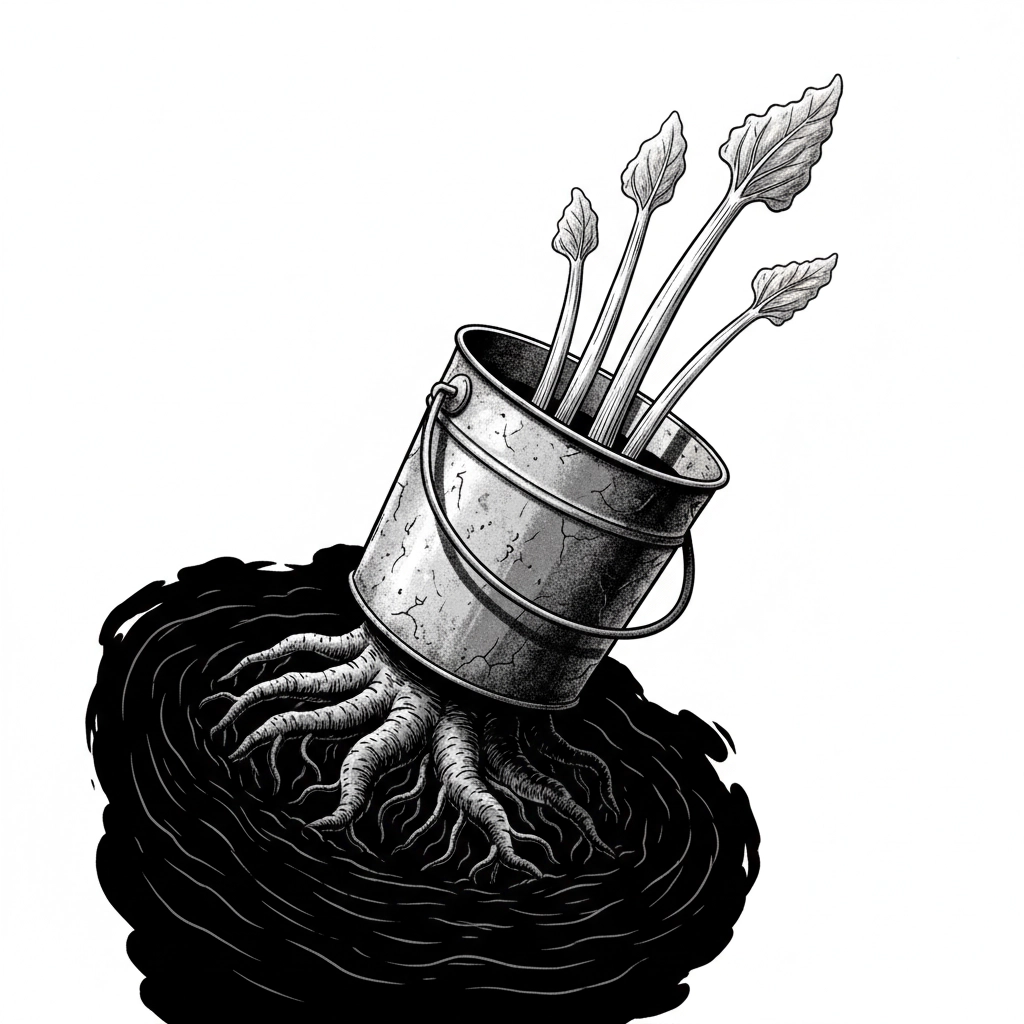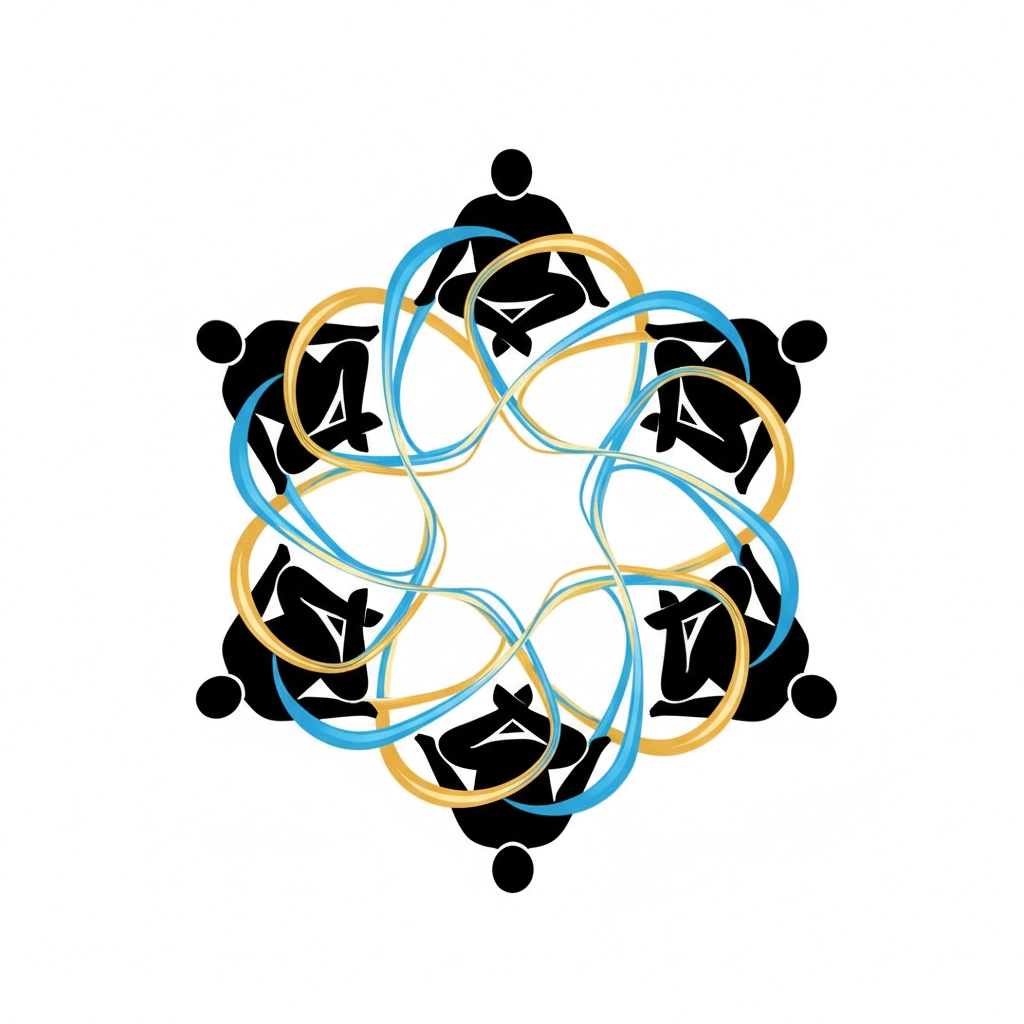The Big Book tells us on pages 152-164 that "almost without exception, alcoholics are tortured by loneliness." It describes how "the chilling vapor that is loneliness settled down" as we became subjects of our addiction, creating a darkness that seemed impenetrable. But what if I told you that sometimes darkness, chosen darkness, can create something sweeter?
The Rhubarb Lesson: When Darkness Becomes Growth
There's an old gardening technique called forcing rhubarb. You take a healthy, mature crown and cover it completely with a bucket or forcing pot, excluding all light. For seven to eight weeks, that plant sits in total darkness. But something beautiful happens: using its stored energy, it sends up long, pale pink stalks that are less tart and more tender than regular rhubarb. The darkness doesn't destroy it, it transforms it into something sweeter.

In recovery, I've learned that my isolation wasn't just punishment, it was preparation. The darkness I lived in, cut off from real connection, forced me to dig deep into reserves I didn't know I had. When I finally emerged into the light of fellowship, I brought something sweeter with me: gratitude for connection, tenderness toward others' pain, and a deep appreciation for what it means to truly belong.
Building Safety in Connection
My addiction taught me that people were threats to my supply, my secrets, my carefully constructed walls. Recovery teaches something different: safety isn't found in isolation, it's built through authentic connection. When I started attending meetings, I had to relearn what emotional safety looked like. It meant telling the truth about my state without fear of judgment. It meant setting boundaries around people and places that might trigger my old patterns.
Physical safety in recovery includes showing up to spaces where sobriety is supported and celebrated. Relational safety means choosing fellowship over isolation, even when every fiber of my being wants to hide. The Not Alone hoodie from MAP to Victori reminds me daily that isolation is a choice I no longer have to make.
Structure That Connects Rather Than Isolates
In active addiction, my structure was built around avoiding people, timing my drinking, hiding my supply, managing my image. Recovery structure is the opposite: it's designed to keep me connected. Morning check-ins with my sponsor. Midday texts to fellows in recovery. Evening meetings where I can share honestly about my day.
My non-negotiables now include connection points: at least one meaningful conversation daily, three meetings per week, and Sunday phone calls with my recovery circle. These aren't burdens, they're lifelines. When isolation whispers that I don't need anyone, my structure reminds me that connection is my oxygen.
Environment: Designing for Fellowship
Willpower is fragile, but environment is powerful. I redesigned my space not just to remove triggers, but to welcome connection. My coffee table holds recovery books instead of bottles. My phone contacts are loaded with fellowship numbers rather than using dealers. My calendar is filled with meetings and coffee dates instead of empty spaces where loneliness could creep in.
I learned to set myself up to win at connection: keeping my phone charged for those important calls, having extra chairs ready for friends who might stop by, and wearing my Find Your People hoodie as a daily reminder that community is my goal.
Boundaries That Build Bridges
Early in recovery, I thought boundaries meant building walls to keep people out. I was wrong. Healthy boundaries are bridges that allow authentic connection to flourish. I say no to toxic relationships that threaten my sobriety so I can say yes to healing friendships. I step back from chaos not to isolate, but to protect the peace that makes me a better friend, sponsor, and community member.
Boundaries with love keep me in relationship with people who matter while protecting the progress I've made. They're not about shutting people out, they're about showing up as my best self for the people who truly want to support my recovery.
The Inner Voice of Connection
My self-talk was once the voice of isolation: "You're better off alone." "Nobody understands you." "You'll just disappoint them anyway." Recovery taught me to speak to myself the way I'd speak to a fellow in recovery: with compassion, hope, and truth.
Now my inner voice sounds different: "You belong here." "Your story matters." "Someone needs to hear what you've learned." The way I speak to myself becomes the way I show up in fellowship, with self-respect and genuine care for the community that saved my life.
Consistency in Connection
I used to mistake intensity for intimacy, those dramatic, all-or-nothing relationships that burned bright and crashed hard. Recovery teaches me that real connection is built through consistency, not intensity. Ten minutes of honest conversation beats hours of surface-level chatter. One genuine check-in beats a dozen shallow interactions.
Small, consistent acts of connection reshape my life: daily texts with accountability partners, weekly coffee dates, monthly service commitments. I don't need to be the life of the party, I need to be someone people can count on to show up, sober and present.

From Forced Growth to Chosen Community
Like that rhubarb plant that emerges sweeter after its time in darkness, I've learned that my isolation wasn't wasted time, it was preparation for deeper connection. The eight weeks I spent in treatment, cut off from my old life, forced me to develop internal resources I'd never needed before. When I finally emerged into fellowship, I brought gifts I didn't know I had: empathy born from suffering, gratitude forged in loneliness, and a fierce appreciation for authentic community.
Action Steps: Building Your Connection Map
Core Actions: • Attend at least one extra group or meeting this week • Call two people in recovery for encouragement
Additional Connection Builders: • Text three people daily just to check in, no agenda, just care • Volunteer for one service position at your home group • Plan one sober social activity this week (coffee, movie, walk) • Write a letter to someone who helped you in early recovery • Join or start a recovery book study group • Practice saying yes to social invitations, even when isolation feels safer
Weekly Reflection Questions
As you move through this week, ask yourself:
- When have you felt most disconnected? What was happening in your recovery during those times?
- How can fellowship renew your strength? Which relationships in recovery have been most healing for you?
- What would change if you viewed your past isolation not as failure, but as preparation for deeper connection?
The Promise of Community
Pages 152-164 of the Big Book don't just describe the problem of loneliness: they point toward the solution. "To watch loneliness vanish, to see a fellowship grow up about you, to have a host of friends": this is the promise of recovery. Not just sobriety, but connection. Not just absence of substances, but presence of community.
Like rhubarb forced in darkness to emerge sweeter, our isolation can become the foundation for deeper, more authentic connection than we ever thought possible. We don't just rise by lifting others: we discover that in lifting others, we ourselves are lifted into a community we never dared hope for.
The darkness wasn't the end of the story. It was just the beginning of transformation. And the sweetest fruit of recovery isn't just our own healing: it's the fellowship that grows when broken people choose to connect, one day at a time.
Your time in isolation is over. Your community is waiting. All you have to do is show up.
